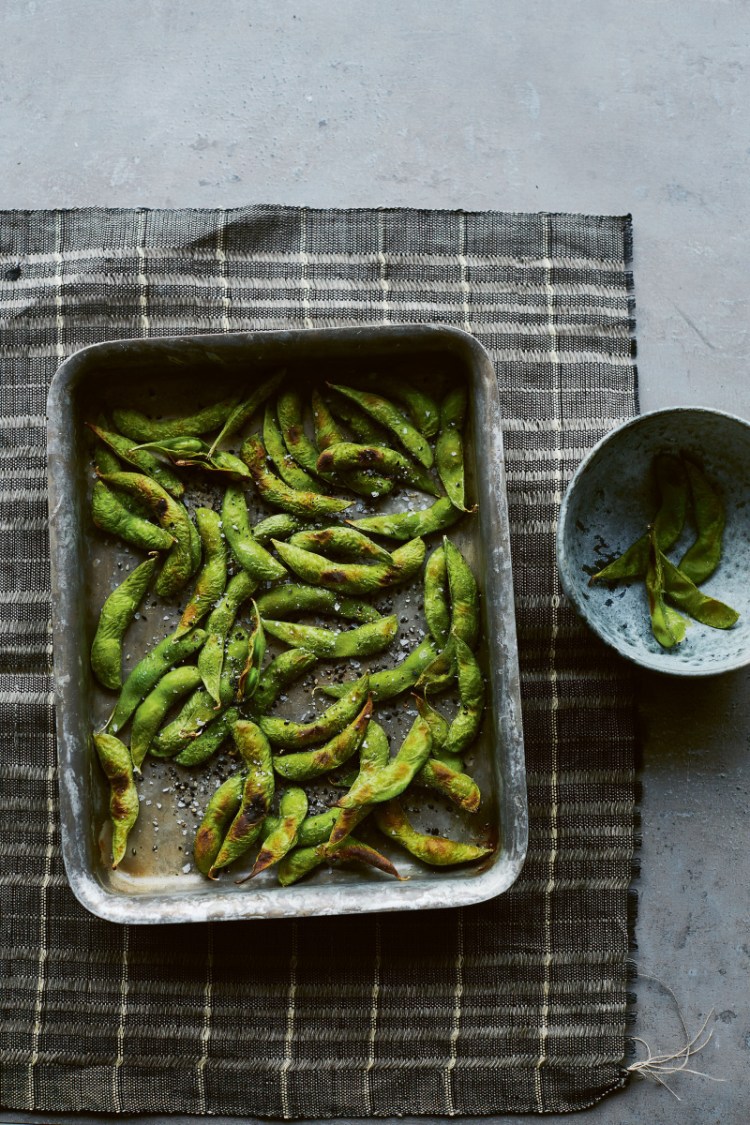Long ago, I spent two years in Japan, where I learned to speak (mediocre) Japanese and, eventually, to write some 500 Japanese characters (which still made me mostly illiterate). Subsequently, I studied Japan for a year in graduate school, and I spent three years on staff at the 112-year-old Japan Society, a cultural institution in New York City. Add to these, I love Japanese food.
So you’d think I’d be a whiz at cooking it. Sadly not.
In recent years, any progress I might have made in that direction has been slowed by the wealth of terrific Japanese (and Japanese-ish) options I have in Portland – Miyake and Pai Men Miyake, Izakaya Minato, the late and much missed Ramen Suzikiya, Ten Ten Pié and more. How lucky am I?!
But soon after the New Year, I found myself drawn to “JapanEasy: Classic & Modern Japanese Recipes to Cook at Home,” a cookbook by Tim Anderson that had recently appeared on my desk. Firmly in that classic January resolutions mode, I resolved to finally tackle Japanese cooking.
I am not entirely sure “JapanEasy” will make my undertaking easy, at least not every recipe, as its title and introduction promise. “Japanese cuisine: loved and respected the world over for its emphasis on rare, top-quality ingredients, precise cooking techniques, and its adherence to strict traditions dating back centuries,” Anderson starts. “That’s the image, anyway. But you want to know the truth? Japanese food is easy.”
His idea of easy may be a little skewed. After all, he’s a “MasterChef UK” champion, the chef/owner of Nanban, a Japanese restaurant in London, and he used to live in Japan, where, unlike me, he apparently learned to cook.
That, however, is the last critical thing I am going to say about “JapanEasy.” In every other respect, I loved this cookbook, from the striking cover – with squiggly gold vertical lines representing noodles – to the last page a gorgeous double-truck graphic of fish under a rising sun with “Sayonara” written in bold black letters.
Anderson is funny and irreverent, and that’s part of the book’s appeal. The first chapter is called “Getting Started: Excuses, Excuses.” (He had my number.) In the Ingredients section, he analyzes people by the type of noodles they prefer: “If you like ramen, you’re a charismatic go-getter and sensation-seeker who likes to party and experiment with psychotropic drugs. If you like soba, you’re more of an introvert, who prefers to stay home with your cat, drinking tea and watching pensive documentaries about typeface design.”
Recipes are rated in terms of difficulty, playful evaluations like “May be difficult if you want a Michelin star – but not if you just want to try some tasty sushi.” The photographs are beautiful and they capture the Japanese aesthetic; they made me “natsukashii” for Japan, which means nostalgic but on steroids.
Anderson isn’t merely clever, though. He knows his stuff, and “JapanEasy” is packed with good and accessible information on Japanese food, cooking and traditions. The recipes range – they’re often homey – and encompass rice, noodles, snacks, sushi, fish, meat, poultry, condiments, drinks and a few desserts, including a nontraditional Miso-Butterscotch Banana Split that is, by itself, worth the price of the book. (“Fantastic and fun!” I scribbled on that page after testing it, not to mention eating far more of it than was right.)
The five other recipes I tried were equally successful. They took me back in time, back to Tokyo – and I liked, and will make again, every one of them.
Peggy Grodinsky can be contacted at 791-6453 or:
pgrodinsky@pressherald.com
Twitter: pgrodinsky
The Best Edamame
From “JapanEasy” by Tim Anderson. This recipe was truly easy, as the book’s title promised, but is quite hard to stop eating.
Serves 2
250 g (9 oz) frozen edamame
1 tablespoon black sesame seeds, crushed (white sesame seeds will do if you can’t get black)
1 teaspoon sesame oil
A few pinches salt, ideally sea salt
Spread the edamame out on a baking tray and place under the grill (broiler) on its highest setting. Keep checking every 5 minutes or so, turning and moving the edamame around periodically to ensure even browning. They are done when they’re nicely browned (and a little black in some places). Immediately toss the edamame with the crushed sesame seeds, sesame oil, if using, and salt, and enjoy while piping hot.
Send questions/comments to the editors.





Comments are no longer available on this story